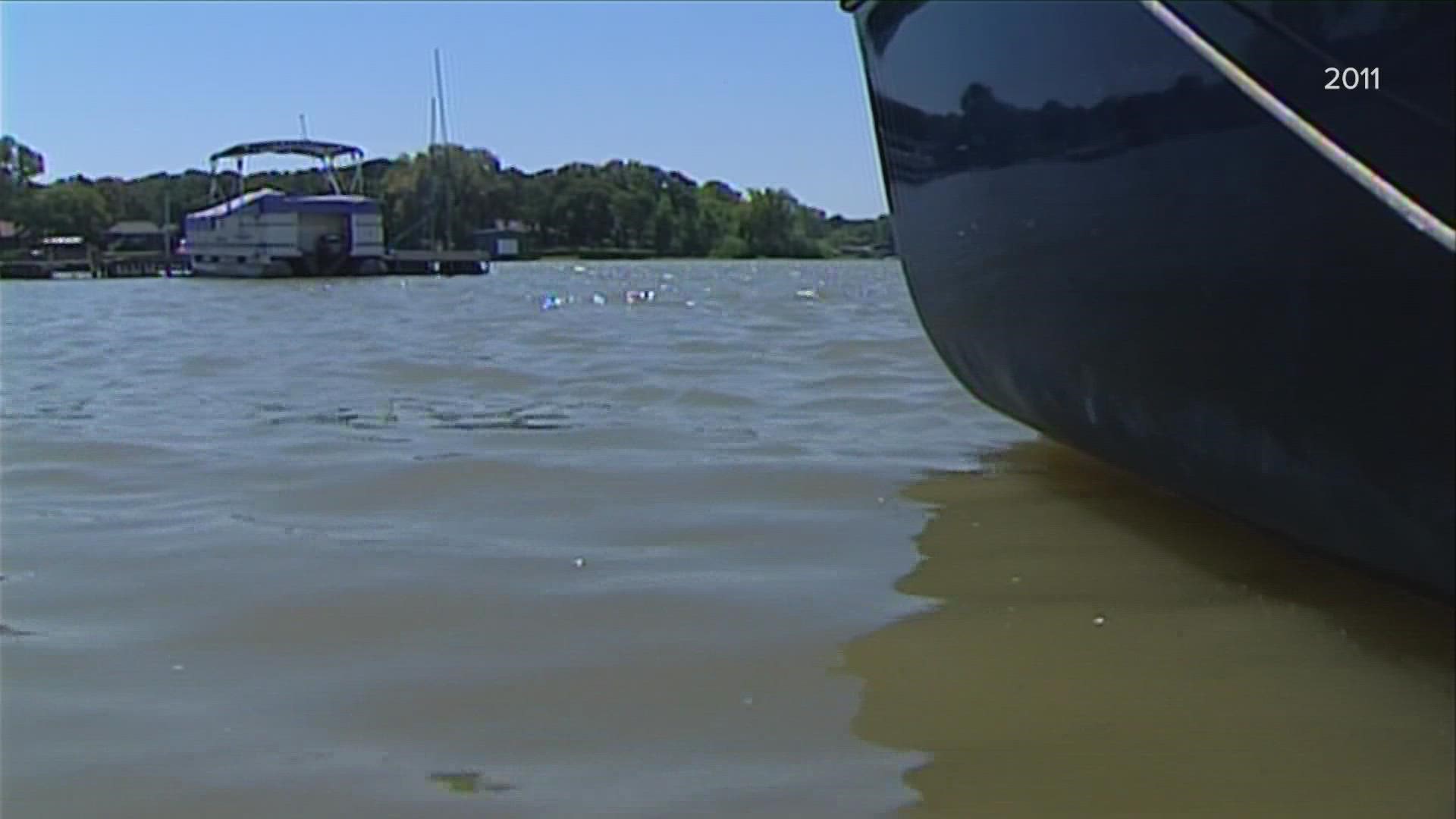COLLIN COUNTY, Texas — North Texas was not immune to the record breaking drought conditions of 2011. The effect of the drought was wide-ranging and, to this day, can be used as a reference point for policy decisions.
Woody Woodruff has been in the boat rental business seventeen years at Collin Park Marina at Lake Lavon. He keeps a close eye on the rising and falling lake levels. He remembers the years 2011 and 2006 very well.
"That was the worst I've ever seen it. All this right here was bone-dry," Woody said pointing to the dozens of slips in the Collin Park Marina. Lake Lavon in Collin County had receded so much you could walk onto the dry lakebed.
"We talk about [2011] a lot internally," said Galen Roberts, Assistant Deputy for Water Resources at the North Texas Municipal Water District. "We're three feet higher now than we were in 2011," he said.
Lake Lavon is North Texas Municipal Water District's primary reservoir. The regional wholesale provider saw a huge supply drop in 2011. The average lake level is 484.63 feet, which is 67% of capacity and in 2011 it was 478.75 feet, which is 45% of capacity.
"We were constantly monitoring every lake in the North Texas municipal water system," said Plano City Manager Mark Israelson.
In 2011, Mark was the Director of Policy and Government Relations for the city. He recalls almost weekly meetings to discuss the ever-changing waterscape of nearby reservoirs.
Plano is one of the region's largest water users. Like every city, it had to enforce strict outdoor watering rules -- twice a week, to once a week, to nothing at all. And, like many cities, Plano had to enforce fines for non-compliance. Israelson recalls the city having to get creative with water schedules: Monday and Wednesday for even numbered addresses and Tuesday and Thursday for odd-numbered addresses.
"Nobody knew when it was going to rain again," Mark told WFAA.
Woodruff said Lavon was so low they had to relocate the marina. He recalls the difficult task of removing the metal pilings and installing them several hundred yards over onto another side of the lake.
"They had to move out the marina out into deeper water," said Woodruff.
Low lake levels hit businesses on the water hard and North Texas was hit with the reality of a water supply crisis. North Texas had dealt with water supply shortages before but not like this. It is one of the first times North Texas cities collectively instituted outdoor watering restrictions to cut down on water usage.
"In 2011, it took some convincing that landscaping would survive at twice-a-week watering. And where we are...it's accepted now," said Israelson.
We've learned a lot since 2011, but Roberts of NTMWD tells WFAA there are new challenges. The District is serving 650,000 more people compared to 11 years ago. In total, with all its 13 member cities and smaller water contracts, NTMWD is serving more than 2 million people.
"Those high demands are putting a strain on our water system infrastructure, in particular, our ability to treat that water and send it out to member cities and customers," said Roberts.
Roberts say the solution is conservation. In the summer months, outdoor irrigation accounts for roughly 40-60% of water usage.
Lake Lavon does not have a supply issue right now as it is 90% full. The April and May rains helped a lot. But all other factors are still in play: scorching temperatures, the drought, the evaporation, the consumption, and the infrastructure.
Eleven years ago, we were reminded of the commodity we took for granted.

